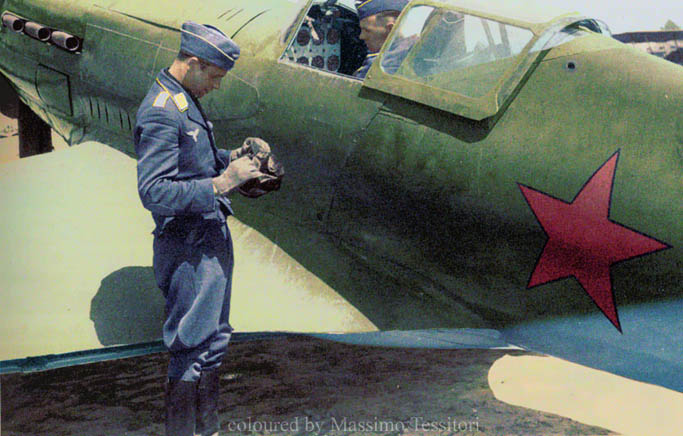
|
MiG-3s wrecked and captured by Germans |
|
|

At the date of the German attack, 17 Soviet Air Force regiments (IAPs) based near the Soviet borders had already received a total of 917 MiGs, plus 64 received by Baltic and Black Sea Naval Aviation; in spite of this, only pilots of few units (20th Mixed Air Division, 41st, 124th, 126th IAP of the Western Special Military District and the 23rd Kiev Air Regiment, 55 IAP on the Southern front) were able to fly well this aircraft.
The attack came in a strongly unfavourable moment for Soviet Air Force, because:
| Some destroyed MiG-3s in an airport captured by Germans. The devastation
caused by fire is evident.
The aircrafts based near the border were forthemost destroyed during the first attack of the Luftwaffe on the early morning of June 22, 1941, the first day of war. The 9th Mixed Aircraft Division had a total of 409 aircrafts, of which at least 233 were new MiGs; it lost 347 of its aircrafts on the first day of war, fortemost destroyed on the ground. The following days the Division commander General Chernykh was arrested as a "people's enemy" and shot, in spite of his value during the Spanish Civil War and of his award as Hero of the Soviet Union. |
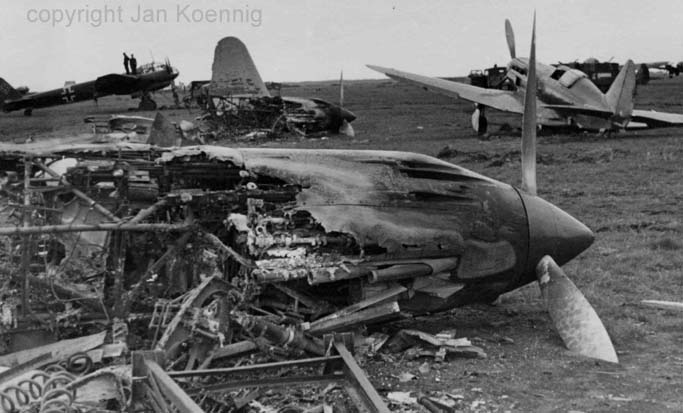 |
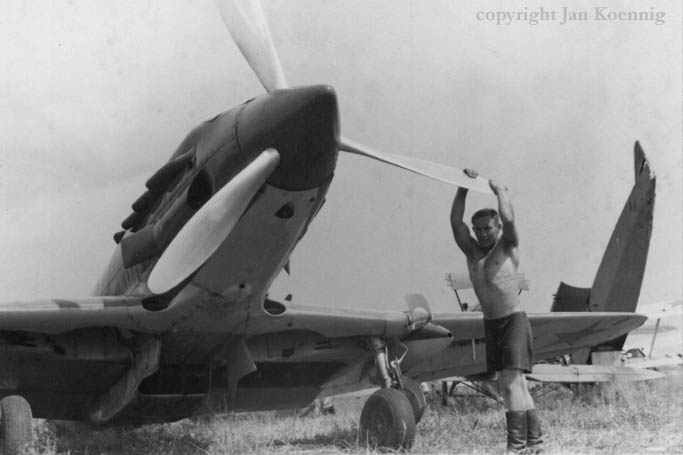 |
The photo above shows an aircraft captured by Germans in summer 1941,
probably at Minsk.
The underwing pod looks to be without gun, because no barrel protrudes from it. Note the opened panels of gun pods ammo and of wingroot fuel tanks, and the flap of the oil cooler outlet in fully opened position on the side of the nose. Copyright Jan Koennig.
|
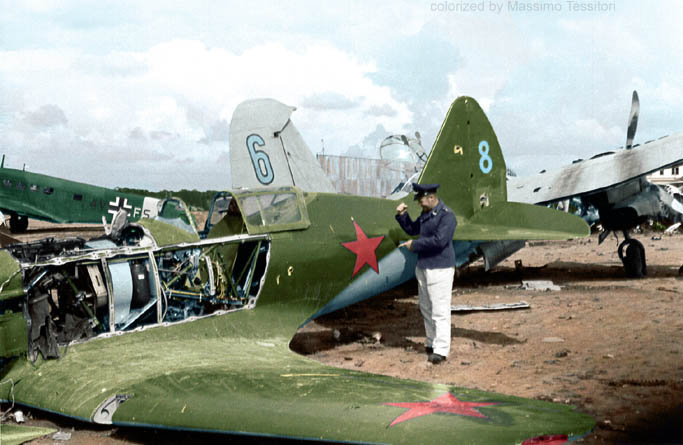 |
A photo of a captured MiG-3.
Some bullet holes on the fuselage show stripped fabric, and yellow putty appears visible. The fuel tank appear as exploded, but no traces of fire are visible. Photo colorized by Massimo Tessitori on an original bw
base of Jan Koennig
|
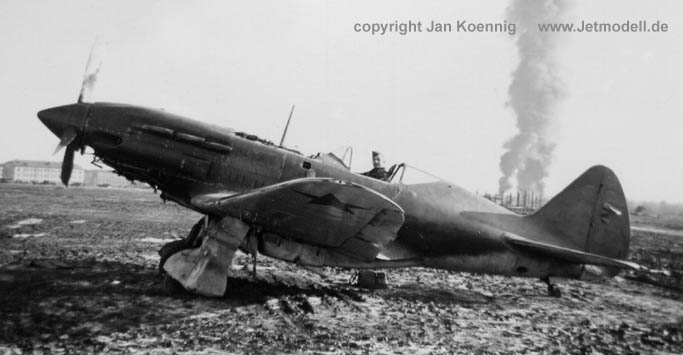 |
This aircraft looks damaged, in particular its propeller blades are
broken (not bended), probably by Soviets before leaving the aircraft. The
aircraft looks to have been repainted on its upper surfaces, probably by
Germans after the capture, to camouflage it against Russian air attacks.
 |
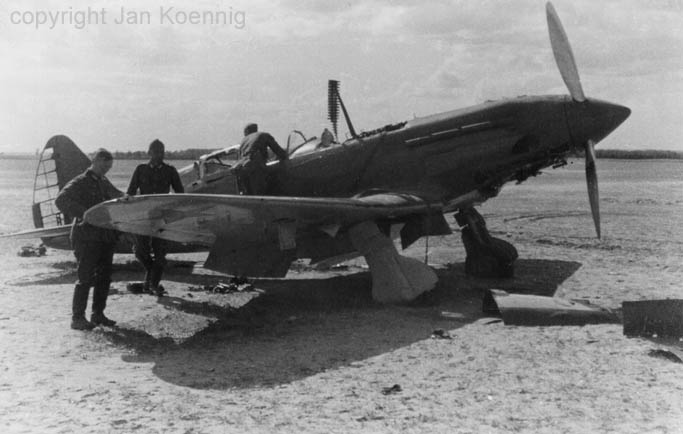
|
Two excellent photos of an example captured by Germans.
The aircraft appears tho have suffered some damage for a bomb blast. Note the swastika overposed to the red star on the fuselage. The radio installation was relatively rare on early MiG-3s, and became more common on later examples. Note the red star over the wing uppersurface, that was standard on pre-war MiGs. This use was abandoned when the war started, to reduce the visibility from above, and was replaced by painting red stars on the tail. The Germans captured 22 MiGs in near-flyable condition and tried to
sell them to Finland.
Copyright Jan Koennig.
|
| A photo of a damaged MiG-3 of the 31 IAP on Kaunas airfield, occupied
by Germans.
This aircraft is the same represented in the colorized photo above, with German officers. The MiG-3s were already operational in many hundred examples in July 1941, so were destroyed on the ground or captured in a greater quantity than other new-generation Soviet fighters, such as the LaGG-3 and Yak-1. |
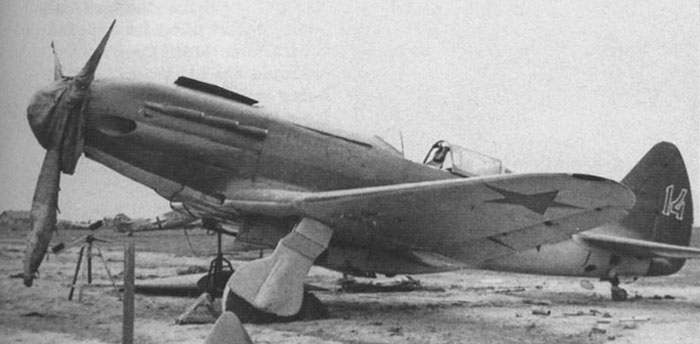
from Salamander- modern fighting aircrafts-MiG |
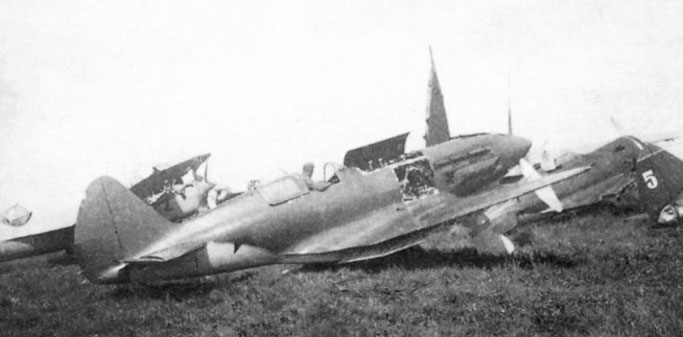
|
Further MiG-3 captured at Siauliai air base.
The photos show many I-16, SB-2, SB-2bis and a German He-111. Note the non-homogeneous color of the green MiG; this look was recurrent on many early MiGs. It is not clear if it was due to color alteration (as the difference between wooden and metallic parts could suggest), repainting, or if it is a sort of camouflage. Compare the shade of MiG with the darker color of I-16s. On most units there were both old Polikarpov fighters and MiGs, not
mastered by most pilots, that often chose to fly biplanes instead of new
fighters.
On the Northern front, German troops occupied the Kaunas airport, in
Lithuania, on June 25; there they found 86 soviet Airplanes of 8 SAD, forthemost
leaved undamaged, including many MiG-1s and MiG-3s of 31th IAP (the
unit had 37 MiGs in service).
from Barbarossa victims |
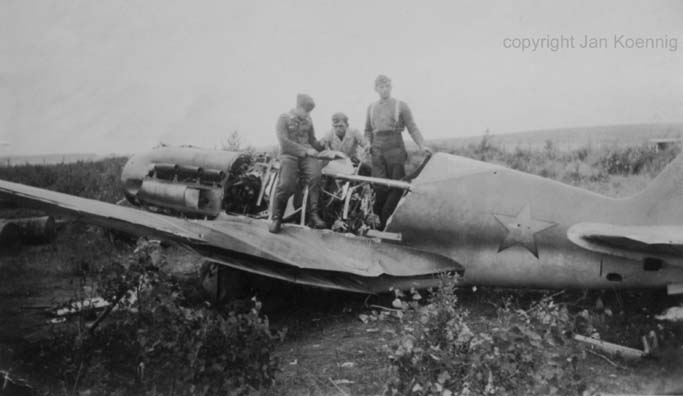 |
This image shows German soldiers on a wrecked MiG-3.
This example features an unusually horizontal demarcation line between light blue and green on the fuselage; usually this line is oblique, from the wingroot to the tail surface leading edge. It's evident that rear fuselage (wooden) and metallic parts of fuselage, wing and tail were painted before being assembled. Copyright Jan Koennig.
|
| This dramatic photo shows probably examples of 31 IAP, captured by
Germans probably at Kaunas air base at the beginning of the war.
From Barbarossa Victims |
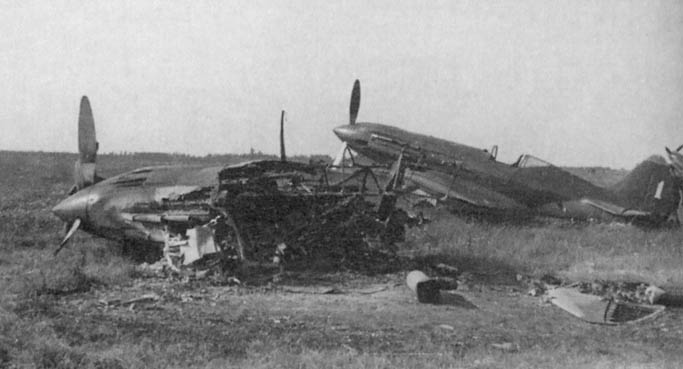 |
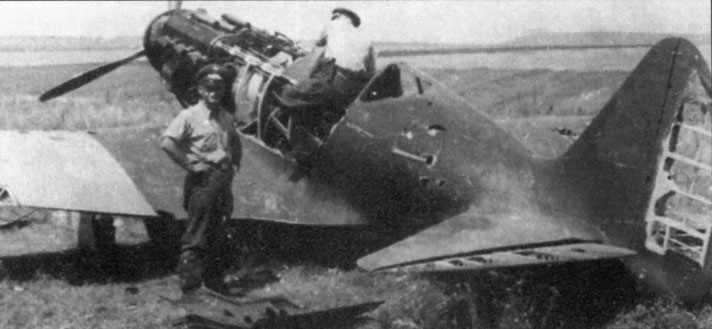 |
Here is a damaged example captured by Germans. It looks to have a 2-green
field-made camouflage, while one wing is from a different aircraft, with
a mysterious light color (perhaps yellow putty after the stripping down
of the fabric layer covering the wooden wing).
The damage appears to have been produced by the nearby blast of a bomb; perhaps some souvenir hunter collaborated to this. from Barbarossa victims
|
|
|